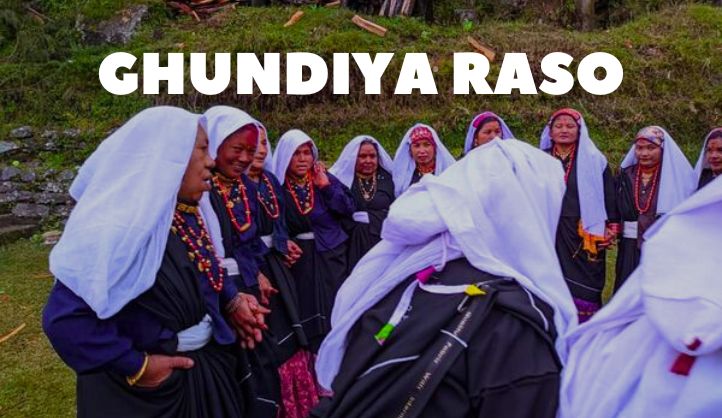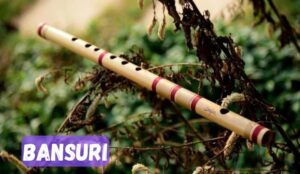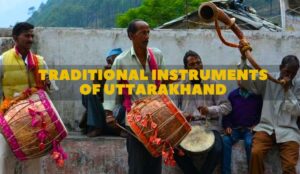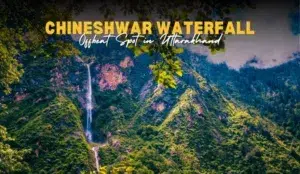Uttarakhand boasts a rich tapestry of culture and traditions. One captivating gem in this treasure trove is the Ghundiya Raso, a vibrant folk dance form that embodies the spirit of the state’s Kumaoni region. This blog delves into the history, significance, and captivating aspects of Ghundiya Raso, offering a glimpse into the heart of Uttarakhand’s cultural heritage.
A Legacy Steeped in Tradition
The origins of Ghundiya Raso can be traced back centuries, believed to have emerged during the Katyuri dynasty (7th-12th centuries AD) in the Kumaon hills. Traditionally performed by women, the dance was associated with festivities and celebrations, particularly during the harvest season. It served as a way for women to express their joy, gratitude, and community spirit. Over time, Ghundiya Raso transcended its agricultural roots and became an integral part of social gatherings, weddings, and cultural events in the Kumaoni way of life.
The Allure of Movement and Melody
The essence of this folk dance form lies in its synchronized movements and rhythmic beats. The dance typically involves a group of women dressed in vibrant colored attire, adorned with traditional Kumaoni jewelry. The most distinctive element is the Ghungroo (bells) tied around their ankles, which produce a melodious tinkling sound with each step.
The choreography of Ghundiya Raso is characterized by simple yet graceful movements. The dancers form a circle, their arms interlocked and move in a coordinated fashion. Steps like side shuffles, hops, and gentle turns create a captivating visual presentation. The rhythm of the dance is dictated by the pulsating beats of the Dhol (drum) and the Hudka. In some variations, singers accompany the dance with soulful melodies that enhance the celebratory mood.
There are several variations of this folk dance form each with its distinct style and name. Some popular variations include the Langvir Raso and the Chanchari Raso. These variations may differ in terms of the formation, the complexity of steps, and the accompanying music.
A Celebration Beyond Dance
Ghundiya Raso is more than just a dance, it’s a window into the social fabric of Kumaoni society. The lyrics of the songs accompanying the dance often speak of themes like love, marriage, social issues, and the beauty of nature. The dance serves as a platform for women to express themselves, celebrate their cultural heritage, and strengthen community bonds.
In recent times, this folk dance form has transcended the boundaries of villages and gained recognition on a wider stage. Cultural troupes dance at regional and national events, captivating audiences with vibrancy and cultural significance. This growing recognition has helped preserve and introduce this traditional art form to new generations.
Learning Ghundiya Raso – Keeping the Tradition Alive
Traditionally, Ghundiya Raso was passed down through generations, with mothers and grandmothers teaching the steps and songs to their daughters. However, with changing times and the migration of younger generations to urban areas, the transmission of this art form has faced challenges.
To address this concern, initiatives are underway to revive and promote this folk dance form. Cultural organizations and educational institutions are offering workshops and classes where anyone can learn the steps and music of the dance. This not only helps preserve the tradition but also fosters a sense of cultural appreciation among younger generations.
The Enchanting Melody Lingers On
Ghundiya Raso is a captivating dance form that embodies the cultural essence of Uttarakhand. Its synchronized movements, melodious beats, and vibrant attire create a visual and auditory treat. Beyond entertainment, the dance serves as a celebration of community spirit, a platform for women’s expression, and a testament to the rich heritage of the Kumaon region. As efforts continue to revive and promote this art form, the enchanting melody of Ghundiya Raso promises to resonate for generations to come.
FAQs About Ghundiya Raso
1. Is Ghundiya Raso performed only by women?
Traditionally, Ghundiya Raso was an exclusive women’s dance form. However, in recent times, variations involving men have also emerged.
2. What are the instruments used in Ghundiya Raso?
The Dhol (drum) and the Hudka are the primary instruments used to create the rhythm for the dance.
3. What are the different variations of Ghundiya Raso?
Popular variations include Langvir Raso, Chanchari Raso, and many more. Each variation has its distinct style and steps.
4. Is any special attire needed for Ghundiya Raso?
Traditionally, women wear colorful Ghagras (skirts) and Cholis (blouses) adorned with intricate embroidery. However, for learning purposes, comfortable clothing that allows for free movement is perfectly acceptable.
5. Are there any festivals where I can see Ghundiya Raso performed?
Several festivals in Uttarakhand showcase Ghundiya Raso. Some popular ones include Nanda Devi Mela, Uttarayani Mela, and Mahakumbh.





